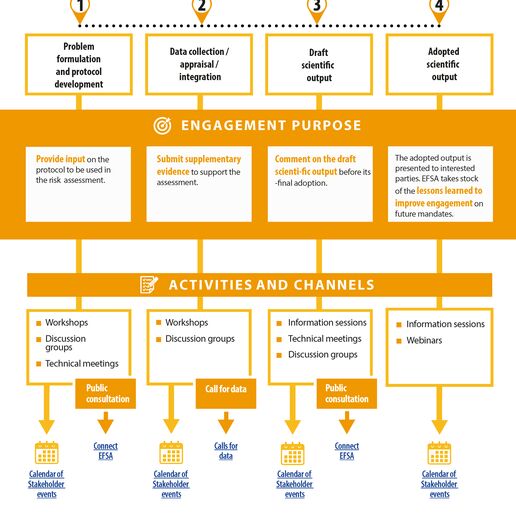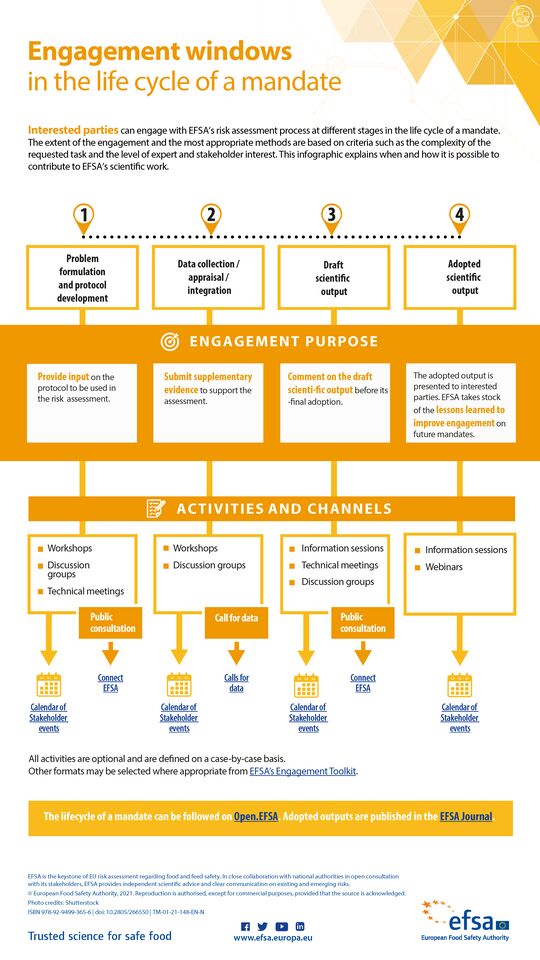Engagement windows in the life cycle of a mandate


Interested parties can engage with EFSA’s risk assessment process at different stages in the life cycle of a mandate. The extent of the engagement and the most appropriate methods are based on criteria such as the complexity of the requested task and the level of expert and stakeholder interest. This infographic explains when and how it is possible to contribute to EFSA’s scientific work.
This infographic explains when and how it is possible to contribute to EFSA’s scientific work.
| 1 | 2 | 3 | 4 |
| Problem formulation and protocol development | Data collection/ appraisal/ integration | Draft scientific output | Adopted scientific output |
| Engagement purpose | |||
| Provide input on the protocol to be used in the risk assessment | Submit supplementary evidence to support the assessment | Comment on the draft scientific output before its final adoption | The adopted output is presented to interested parties. EFSA takes stock of the lessons learned to improve engagement on future mandates |
| Activities and channels | |||
|
|
|
|
| Calendar of Stakeholder events | Calendar of Stakeholder events | Calendar of Stakeholder events | Calendar of Stakeholder events |
| Public consultation on Connect EFSA | Call for data on Call for data | Public consultation on Connect EFSA | |
All activities are optional and are defined on a case-by-case basis.
Other formats may be selected where appropriate from EFSA’s Engagement Toolkit.
The lifecycle of a mandate can be followed on Open.EFSA. Adopted outputs are published in the EFSA Journal.
EFSA is the keystone of EU risk assessment regarding food and feed safety. In close collaboration with national authorities in open consultation with its stakeholders, EFSA provides independent scientific advice and clear communication on existing and emerging risks.